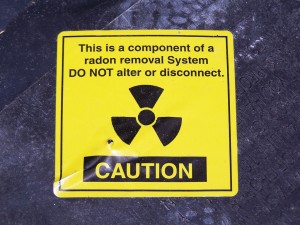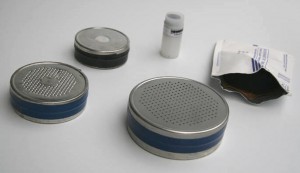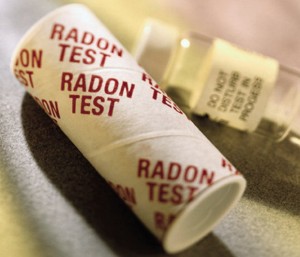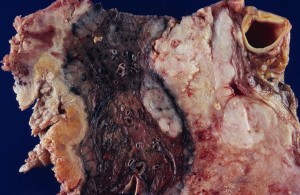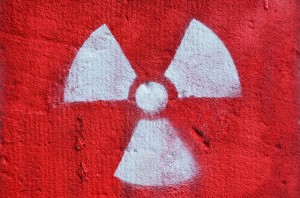Radon gas is the second leading cause of lung cancer in the United States. It’s responsible for the deaths of more than 21,000 Americans each year. That’s not even taking into account its impact in other countries. It’s also the second leading cause of lung cancer in places like Canada, Europe and more.
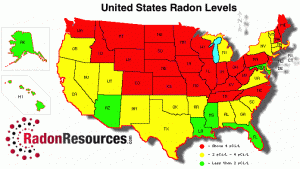 Unfortunately, few people are aware that it’s such a big issue. To make matters worse, the folks that do know about it, haven’t been properly educated. That is to say, there are dozens — if not hundreds — of myths and misconceptions floating around that only work to confuse people more.
Unfortunately, few people are aware that it’s such a big issue. To make matters worse, the folks that do know about it, haven’t been properly educated. That is to say, there are dozens — if not hundreds — of myths and misconceptions floating around that only work to confuse people more.
Make no mistake about it people, radon gas is a severe problem and it affects all of us. It is estimated that every one in fifteen homes in the country have elevated levels of radon gas inside. Since it’s odorless, colorless and tasteless the only way to discover its presence is to test specifically for it.
The longer you are exposed to concentrated levels of radon gas, the higher your risk for lung cancer is. At the recommended action limit of 4.0 pCi/L — as set by the US EPA — exposure is the equivalent of smoking roughly a half a pack of cigarettes per day. For every additional 15 pCi/L, that jumps another full pack. You’d be surprised how many homes out there have elevated levels at 30 pCi/L or higher.
Common Myths About Radon Gas
To clear up some of the confusion, we’re going to explore some of those myths and misconceptions to identify why they’re wrong, and what the truth is.
- Scientists are not sure whether or not Radon is a problem – This is false, we know for sure it’s a problem there are just many debates on how extensive the dangers are.
- Radon testing is too difficult, expensive and time consuming – It is not any of these things.
- Home with elevated Radon levels cannot be fixed or lived in – a home with Radon issues can be fixed very quickly and easily in most cases, and is most certainly still livable.
- Radon only affects certain types of homes, including those built years ago – Radon can affect any home or location, it doesn’t matter.
- My neighbor has elevated Radon levels, so I probably do too – Radon levels can vary greatly from residence to residence, the only way to know for sure is to perform a test.
- You cannot sell a residence or business that previously had Radon problems – This is not true at all, in fact after a residence has been protected from future Radon problems most buyers would consider this a bonus.
- Radon only exists in the basement — This is not true; it may first seep into a home through the basement, but it can spread to other livable areas of the home.
- Mobile and manufactured homes are immune to radon — All homes are susceptible to radon
- You can lower radon levels by opening doors or windows — Not at all, in fact in some cases radon levels may even increase when you let more air inside your home. Ventilation is always good, but it’s not a viable solution to remove radon gas.
- Radon is a residential problem only — Radon can be a problem in any enclosed structure including commercial buildings, businesses and public buildings such as schools or libraries.
That about wraps it up for myths. If you’d like to read more general information about radon gas head on over to our dedicated page.
Testing for Radon Gas
Now that you’ve acknowledged radon is a problem and it may even be a risk in your home, where do you go next?
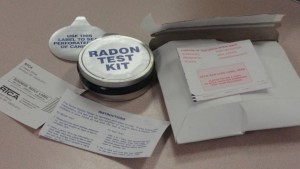 Your next step is to test your home for the presence of this deadly gas. You can either do it yourself — by purchasing a DIY kit at a local hardware store or online — or hire an experienced professional to come to your home and do the work. We recommend performing a short-term test in your home first, and then hiring an experienced professional if the results turn-up elevated levels.
Your next step is to test your home for the presence of this deadly gas. You can either do it yourself — by purchasing a DIY kit at a local hardware store or online — or hire an experienced professional to come to your home and do the work. We recommend performing a short-term test in your home first, and then hiring an experienced professional if the results turn-up elevated levels.
Short-term tests are placed inside the home at the lowest livable area — this does not necessarily mean basement, this means the lowest livable space of your home that you frequent most. Never place a test in a kitchen or bathroom, because there are appliances that may affect the test samples.
Before beginning a test, lock down your home for twelve hours. During this time, minimize the opening and closing of both doors and windows as much as possible. Do not run any ventilation systems that run to the outside, and turn off all indoor fans.
When placing the sample vials, they must be at least 20 inches off the floor and six inches away from each other. After the vials have been placed, you can remove the caps. It is very important that you wait a minimum of 48 hours, but no more than 96 hours (two to four days) before placing the caps back on the vials. In addition, you should never disturb the vials in any way. Make sure you have placed them in a location where they will not be tampered with.
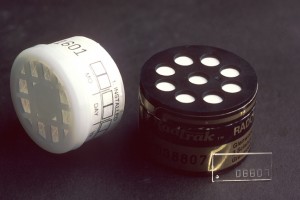 When the time is up, place the caps back on the vials and send them to the appropriate laboratory along with the necessary resources – which is usually an information form and a check to cover applicable fees. It is recommended that you mail the vials within a day or two so that the lab can return accurate results.
When the time is up, place the caps back on the vials and send them to the appropriate laboratory along with the necessary resources – which is usually an information form and a check to cover applicable fees. It is recommended that you mail the vials within a day or two so that the lab can return accurate results.
The laboratory will either mail the results back to your home or post them online, depending on the service and brand you’ve chosen for your test.
Obviously, if you hire a professional to do the test you will need to follow the same steps listed here but someone else will be conducting the air collection duties.
If your short-term test turns up elevated levels of radon, we recommend performing a long term test. This will provide you with a more accurate average of the levels in your home. As we recommended above however, you’re better off finding a professional when you discover elevated levels because they can walk you through the mitigation process if you find your home is a hot zone.
Radon Gas Mitigation and Removal
If you discover radon levels in your home that exceed 4.0 pCi/L then mitigation is absolutely necessary. Although, we recommend having mitigation done if your levels are above 2.0 pCi/L.
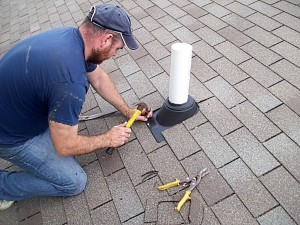
Image by SWAT Environmental
Radon mitigation is quite simply, installing a unique ventilation system that removes the radon gas from inside the home and pushes it out into the open air. Once dispersed, it is no longer as dangerous and hazardous because it is not concentrated. Keep in mind, the area above a radon ventilation duct can be dangerous, but generally these are placed high above the home — primarily on rooftops — out of reach.
When modern homes are constructed, they are built using radon-resistant measures. Unfortunately, they don’t always work. Things like a radon barrier — which is a thin sheet of plastic placed over the foundation — don’t always keep the dense gas out of a home.
In the most common form of mitigation performed, a ventilation duct or pipe is usually placed below the foundation or run through the floor in the lowest livable area. It is fed through the entire home, and out of the ceiling/roof so the radon gas can escape outside. A fan is connected to the system to help push the radon gas out from under the home. In most cases, this lowers the levels of radon gas inside. Further testing is always recommended after a mitigation system has been installed, just to ensure it’s in proper working condition. In fact, we recommend testing your home at least twice a year: once in the summer and another time in the winter.
The mitigation system described above may not work for all homes, which is why it’s good to hire a professional. They will assess radon problems on a case-by-case basis and decide what system will work best to remove it. They are also certified by the state, and appear on a National Certified list (NEHA/NRSB). Do not hire someone who claims to be certified, yet cannot provide proof. It’s best just to use the National Certified list to locate a local radon professional in your area.
Keep Your Home Safe from Radon Gas
In due time, you can ensure your home is free of radon, and safe for your family. In the grand scheme, testing for radon and having a mitigation system installed (when necessary) is well worth the invested time and cost. Lung cancer has one of the highest mortality rates of any form of cancer, and medical bills related to it can cost hundreds of thousands of dollars. Compared to a DIY radon test which is about $30, and a mitigation system which can run about $3,500 at its most expensive the cost of lung cancer is exponentially higher.
Test your home for radon — or have it tested — today.
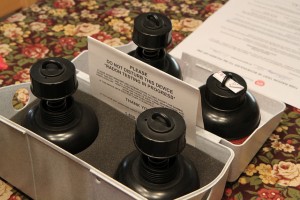 You may have heard claims that radon gas can enter your home after being released by a granite countertop or similar building materials. This is true, however the likelihood of this source being hazardous to ones health is low. Radon does seep out of various rocks and natural materials in extremely small amounts. This alone, is not enough to cause a significant buildup in your home or residence. Of course, if you already have elevated levels in your home this can certainly make things worse.
You may have heard claims that radon gas can enter your home after being released by a granite countertop or similar building materials. This is true, however the likelihood of this source being hazardous to ones health is low. Radon does seep out of various rocks and natural materials in extremely small amounts. This alone, is not enough to cause a significant buildup in your home or residence. Of course, if you already have elevated levels in your home this can certainly make things worse.



 That may soon change, as the Iowa Senate will be weighing in on legislation that requires builders to integrate radon mitigation systems in all new homes. This is done by running a series of pipes under the foundation, which are then connected to a fan that pumps the gas out and away. In some cases, if the radon mitigation system detects elevated levels of radon, then it will automatically activate the fan and clean out the home. In others, it runs constantly and keeps the home radon free at all times.
That may soon change, as the Iowa Senate will be weighing in on legislation that requires builders to integrate radon mitigation systems in all new homes. This is done by running a series of pipes under the foundation, which are then connected to a fan that pumps the gas out and away. In some cases, if the radon mitigation system detects elevated levels of radon, then it will automatically activate the fan and clean out the home. In others, it runs constantly and keeps the home radon free at all times.
